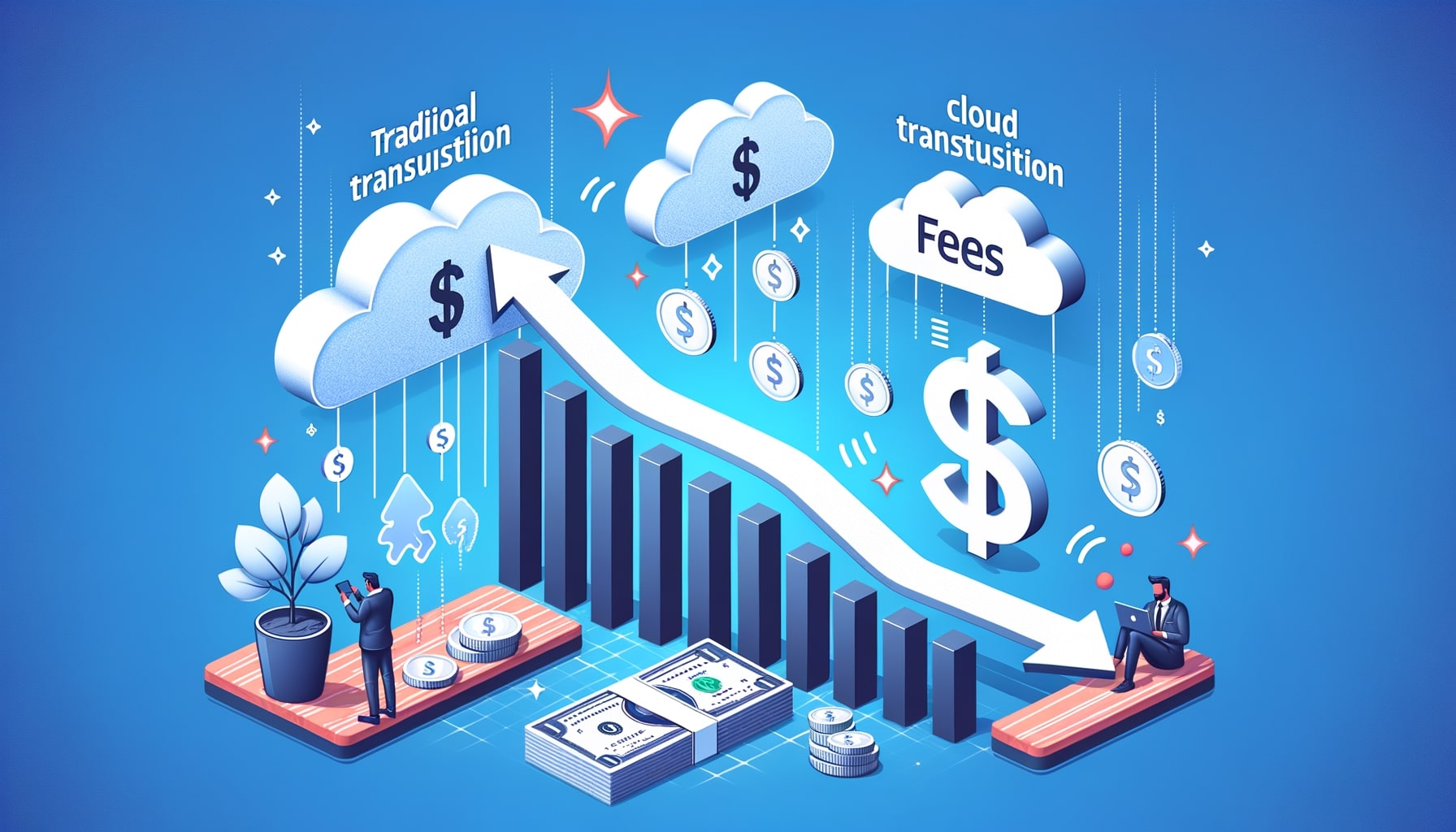Strategies for Reducing Costs with Cloud Payment Systems
In today’s digital age, businesses are constantly seeking ways to streamline their operations and reduce costs. One area where significant savings can be achieved is in payment processing. Traditional payment systems can be expensive to maintain and require substantial upfront investments. However, with the advent of cloud payment systems, businesses now have access to cost-effective solutions that offer numerous benefits. In this article, we will explore strategies for reducing costs with cloud payment systems and how businesses can leverage these systems to their advantage.
Understanding the Benefits of Cloud Payment Systems
Before delving into cost reduction strategies, it is essential to understand the benefits that cloud payment systems offer. Cloud payment systems, also known as payment-as-a-service (PaaS), provide businesses with a secure and scalable platform to process payments. These systems eliminate the need for on-premises hardware and software, reducing upfront costs and ongoing maintenance expenses. Additionally, cloud payment systems offer seamless integration with existing business processes, enabling businesses to streamline their operations and improve efficiency.
One of the key advantages of cloud payment systems is their ability to handle high transaction volumes. Traditional payment systems often struggle to cope with spikes in demand, leading to potential downtime and lost revenue. Cloud payment systems, on the other hand, are designed to scale effortlessly, ensuring uninterrupted service even during peak periods. This scalability not only improves customer satisfaction but also reduces the risk of lost sales due to system failures.
Another benefit of cloud payment systems is their enhanced security features. These systems employ advanced encryption and tokenization techniques to protect sensitive customer data. By storing payment information securely in the cloud, businesses can reduce the risk of data breaches and potential financial liabilities. Additionally, cloud payment systems often comply with industry standards and regulations, further enhancing security and reducing the burden of compliance for businesses.
Key Strategies for Reducing Costs with Cloud Payment Systems
Now that we have established the benefits of cloud payment systems, let’s explore key strategies for reducing costs with these systems.
- Consolidate Payment Channels: Many businesses operate multiple payment channels, such as online stores, mobile apps, and physical point-of-sale terminals. Managing these channels separately can be costly and time-consuming. By consolidating payment channels onto a single cloud payment system, businesses can streamline operations, reduce maintenance costs, and improve customer experience.
- Leverage Economies of Scale: Cloud payment systems are typically offered as a service, allowing businesses to benefit from economies of scale. By pooling resources with other businesses, cloud payment service providers can offer cost-effective solutions that would be unaffordable for individual businesses. This shared infrastructure reduces costs and allows businesses to access advanced payment processing capabilities at a fraction of the cost.
- Optimize Payment Routing: Payment routing refers to the process of selecting the most cost-effective payment method for each transaction. Cloud payment systems often offer intelligent routing capabilities that can automatically select the most cost-effective payment method based on factors such as transaction value, location, and customer preferences. By optimizing payment routing, businesses can reduce transaction fees and maximize cost savings.
- Implement Dynamic Currency Conversion: For businesses operating in multiple countries, dynamic currency conversion (DCC) can be a valuable cost-saving strategy. DCC allows businesses to offer customers the option to pay in their local currency, while the transaction is settled in the business’s base currency. By leveraging DCC through a cloud payment system, businesses can reduce currency conversion fees and improve transparency for international customers.
- Utilize Data Analytics: Cloud payment systems generate a wealth of transaction data that can be leveraged to identify cost-saving opportunities. By analyzing transaction patterns, businesses can gain insights into customer behavior, identify potential fraud, and optimize payment processes. These data-driven insights can help businesses reduce costs by identifying inefficiencies and implementing targeted improvements.
Implementing Cost-Effective Cloud Payment Solutions
Implementing a cost-effective cloud payment solution requires careful planning and consideration. Here are some key steps to follow:
- Assess Business Needs: Before selecting a cloud payment system, businesses should assess their specific requirements. Consider factors such as transaction volume, payment channels, integration capabilities, and security requirements. By understanding these needs, businesses can select a solution that aligns with their goals and budget.
- Evaluate Service Providers: There are numerous cloud payment service providers in the market, each offering different features and pricing models. It is crucial to evaluate multiple providers and compare their offerings to find the most cost-effective solution. Consider factors such as pricing structure, scalability, security measures, and customer support.
- Plan for Integration: Integration with existing business systems is a critical aspect of implementing a cost-effective cloud payment solution. Ensure that the chosen system can seamlessly integrate with existing software, such as accounting and inventory management systems. This integration will streamline operations and reduce manual data entry, leading to cost savings.
- Train Employees: Proper training is essential to ensure that employees can effectively utilize the cloud payment system. Provide comprehensive training on how to process payments, handle customer inquiries, and troubleshoot common issues. Well-trained employees will be more efficient, reducing the risk of errors and improving customer satisfaction.
Leveraging Automation and Integration for Cost Savings
Automation and integration are key strategies for reducing costs with cloud payment systems. By automating manual processes and integrating payment systems with other business systems, businesses can achieve significant cost savings. Here are some ways to leverage automation and integration:
- Automated Payment Processing: Cloud payment systems offer automation capabilities that can streamline payment processing. Automate tasks such as invoice generation, payment reminders, and reconciliation to reduce manual effort and improve efficiency. This automation reduces the risk of errors and frees up employees to focus on more value-added tasks.
- Integration with Accounting Systems: Integrating the cloud payment system with the business’s accounting software can eliminate the need for manual data entry. Payments can be automatically recorded in the accounting system, reducing the risk of errors and saving time. This integration also enables real-time financial reporting, providing businesses with accurate and up-to-date financial information.
- Integration with Inventory Management Systems: For businesses that sell physical products, integrating the cloud payment system with inventory management systems can lead to cost savings. When a payment is processed, inventory levels can be automatically updated, ensuring accurate stock management. This integration reduces the risk of overselling or stockouts, optimizing inventory levels and reducing holding costs.
- Streamlined Customer Communication: Cloud payment systems often offer features such as automated payment confirmations and customer notifications. By leveraging these features, businesses can reduce the need for manual communication, saving time and resources. Additionally, automated notifications can help reduce customer inquiries and improve customer satisfaction.
Optimizing Cloud Payment Infrastructure for Efficiency
To achieve maximum cost savings, businesses must optimize their cloud payment infrastructure for efficiency. Here are some strategies to consider:
- Scalability Planning: Cloud payment systems offer scalability, allowing businesses to handle increasing transaction volumes without disruption. However, it is essential to plan for scalability to ensure cost efficiency. Monitor transaction volumes and performance regularly to identify potential bottlenecks and proactively scale resources as needed. This proactive approach will prevent overprovisioning and unnecessary costs.
- Load Balancing: Load balancing is a technique that distributes incoming payment requests across multiple servers to ensure optimal performance. By implementing load balancing in the cloud payment infrastructure, businesses can improve system reliability and reduce the risk of downtime. This optimization ensures uninterrupted service and minimizes the impact of system failures on revenue.
- Data Backup and Disaster Recovery: Cloud payment systems store transaction data in the cloud, reducing the risk of data loss due to hardware failures or natural disasters. However, businesses should still implement robust data backup and disaster recovery plans to ensure business continuity. Regularly backup transaction data and test the recovery process to minimize downtime and associated costs.
- Performance Monitoring: Monitoring the performance of the cloud payment infrastructure is crucial to identify potential issues and optimize resource allocation. Implement monitoring tools that provide real-time insights into system performance, transaction volumes, and response times. By proactively addressing performance issues, businesses can ensure optimal efficiency and cost savings.
Exploring Cost-Effective Cloud Payment Service Providers
Choosing the right cloud payment service provider is essential for achieving cost savings. Here are some factors to consider when exploring cost-effective options:
- Pricing Structure: Evaluate the pricing structure of different service providers to understand the cost implications. Some providers charge a flat fee per transaction, while others offer tiered pricing based on transaction volume. Consider your business’s transaction volume and growth projections to select a pricing model that aligns with your budget.
- Scalability: Ensure that the chosen service provider offers scalable solutions that can accommodate your business’s growth. Scalability is crucial to avoid overpaying for unused resources or experiencing performance issues during peak periods. Look for providers that offer flexible scaling options and transparent pricing for additional resources.
- Security Measures: Security is a top concern when it comes to payment processing. Evaluate the security measures implemented by different service providers to ensure the protection of sensitive customer data. Look for providers that comply with industry standards and regulations, such as PCI DSS (Payment Card Industry Data Security Standard).
- Integration Capabilities: Consider the integration capabilities of the cloud payment service provider. Ensure that the chosen provider can seamlessly integrate with your existing business systems, such as accounting and inventory management software. This integration will streamline operations and reduce manual effort, leading to cost savings.
Mitigating Risks and Ensuring Security in Cloud Payment Systems
While cloud payment systems offer numerous benefits, businesses must also address potential risks and ensure the security of customer data. Here are some strategies to mitigate risks and enhance security:
- Compliance with Regulations: Cloud payment systems should comply with industry regulations, such as PCI DSS, to ensure the security of customer data. Verify that the chosen service provider has implemented appropriate security measures and regularly undergoes audits to maintain compliance.
- Encryption and Tokenization: Encryption and tokenization are essential techniques for protecting sensitive customer data. Ensure that the cloud payment system employs robust encryption algorithms to secure payment information during transmission and storage. Tokenization can further enhance security by replacing sensitive data with unique tokens that have no intrinsic value.
- Multi-Factor Authentication: Implement multi-factor authentication (MFA) to add an extra layer of security to the cloud payment system. MFA requires users to provide multiple forms of identification, such as a password and a unique code sent to their mobile device. This authentication method reduces the risk of unauthorized access and protects against account breaches.
- Regular Security Audits: Conduct regular security audits of the cloud payment system to identify potential vulnerabilities and address them promptly. Engage third-party security experts to perform penetration testing and vulnerability assessments. These audits will help identify weaknesses in the system and ensure that appropriate security measures are in place.
Overcoming Challenges in Cost Reduction with Cloud Payment Systems
While cloud payment systems offer significant cost-saving opportunities, businesses may encounter challenges during implementation. Here are some common challenges and strategies to overcome them:
- Integration Complexity: Integrating the cloud payment system with existing business systems can be complex, especially if the systems have different architectures or data formats. Engage experienced integration specialists to ensure a smooth integration process. Proper planning, testing, and documentation are crucial to overcome integration challenges.
- Change Management: Implementing a new payment system requires change management to ensure a smooth transition for employees and customers. Communicate the benefits of the cloud payment system to employees and provide comprehensive training to ensure they are comfortable with the new system. Communicate the changes to customers and provide support to address any concerns or issues.
- Data Migration: Migrating existing payment data to the cloud payment system can be a time-consuming process. Develop a data migration plan that ensures the integrity and security of the data during the transfer. Test the migration process thoroughly to identify and address any potential issues before going live.
- Vendor Lock-In: Businesses may face challenges if they want to switch cloud payment service providers in the future. To mitigate the risk of vendor lock-in, carefully review the terms and conditions of the service provider and ensure that data can be easily migrated to another provider if needed. Consider implementing a multi-cloud strategy to avoid dependence on a single provider.
FAQ’s
Q.1: What is a cloud payment system?
A cloud payment system, also known as payment-as-a-service (PaaS), is a secure and scalable platform that businesses can use to process payments. These systems eliminate the need for on-premises hardware and software, reducing upfront costs and ongoing maintenance expenses.
Q.2: How can cloud payment systems reduce costs?
Cloud payment systems can reduce costs in several ways. They eliminate the need for expensive on-premises infrastructure, reduce maintenance costs, and offer cost-effective pricing models. Additionally, these systems can streamline operations, improve efficiency, and reduce the risk of lost sales due to system failures.
Q.3: Are cloud payment systems secure?
Cloud payment systems employ advanced encryption and tokenization techniques to protect sensitive customer data. Additionally, these systems often comply with industry standards and regulations, such as PCI DSS, to ensure the security of payment information. However, businesses should still implement robust security measures and regularly monitor the system for potential vulnerabilities.
Q.4: How can businesses choose the right cloud payment service provider?
When selecting a cloud payment service provider, businesses should consider factors such as pricing structure, scalability, security measures, and integration capabilities. Evaluate multiple providers and compare their offerings to find the most cost-effective solution that aligns with your business’s requirements.
Conclusion
Cloud payment systems offer businesses a cost-effective and efficient solution for processing payments. By consolidating payment channels, leveraging economies of scale, optimizing payment routing, and implementing dynamic currency conversion, businesses can reduce costs and improve customer experience. Automation and integration play a crucial role in achieving cost savings, allowing businesses to streamline operations and eliminate manual effort.
Optimizing the cloud payment infrastructure for efficiency, exploring cost-effective service providers, and ensuring security are essential steps in achieving maximum cost savings. While challenges may arise during implementation, proper planning, training, and change management can help overcome these obstacles. By adopting the strategies outlined in this article, businesses can harness the power of cloud payment systems to reduce costs and drive growth in today’s digital economy.










